Mastering Hawaii's Swell Forecast for Watersports
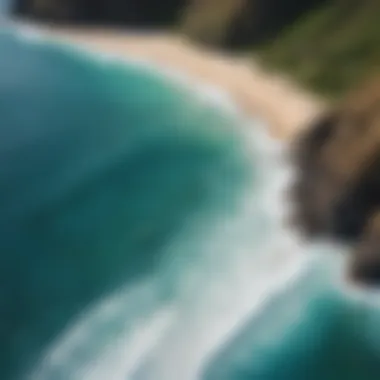
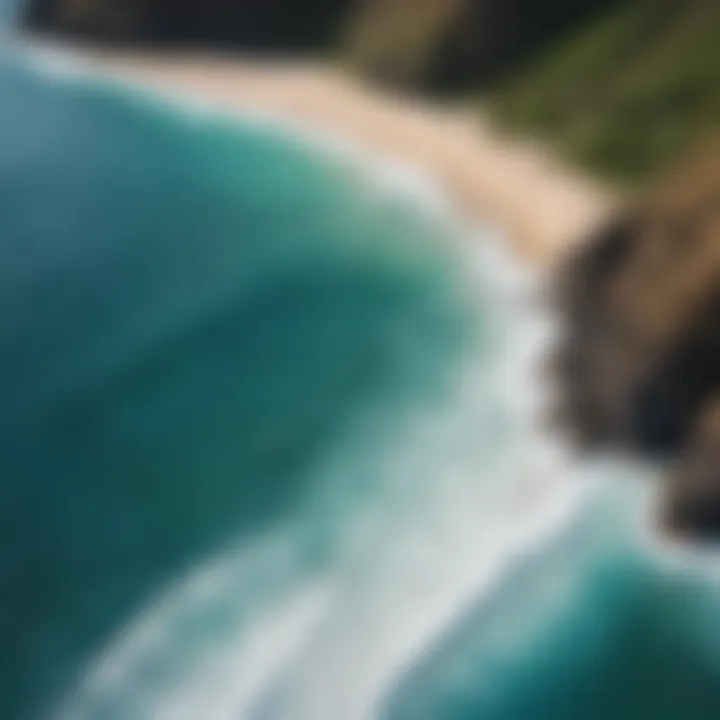
Intro
In the world of watersports, the swell forecast for Hawaii serves as an intricate puzzle that enthusiasts aim to decipher for an optimal experience. Whether you're catching waves in the surf, cruising on a sailboat, or exploring the depths while diving, understanding the dynamics behind swell patterns can dramatically impact your outings. It isn't just about the size of the waves or the wind conditions; there is a complex interplay at work that can dictate your entire day in the water.
To navigate this landscape more effectively, this guide will take a closer look at several key aspects of swell forecasts. You’ll find insights into the fundamental techniques every beginner should grasp, advanced skills for those looking to sharpen their edge, and essential safety measures crucial for enjoying any water-related activity. By the end of this article, you should feel equipped and ready to make the most of Hawaii's illustrious waters.
Techniques and Skills
Fundamental Techniques for Beginners
For newcomers, the ocean can appear daunting, but grasping the basics of swell forecasts is manageable with the right approach. Begin by familiarizing yourself with essential terms like "swell period" and "swell direction." These factors will determine how waves behave and what type of conditions you'll likely encounter.
- Understanding Swell Period: A longer swell period generally indicates waves that are more organized and powerful, suitable for experienced surfers. In contrast, shorter periods might lead to more choppy waters, which could frustrate those new to the sport.
- Swell Direction: The direction from which the swell originates can lead to variations in wave quality. For instance, a north swell often yields excellent conditions at spots like Waimea Bay, while a west swell might favor the beaches on the south shore.
- Local Knowledge:
Learning from local surfers is invaluable. They can provide insights about tide patterns and specific beaches that work best for different swell sizes and directions. Consider visiting surf schools or joining local forums online, such as on Reddit or Facebook, to connect with seasoned surfers.
Advanced Skills for Experienced Athletes
Once you've got the basic techniques under your belt, it’s time to elevate your knowledge. Advanced athletes can benefit from a deeper analysis of swell forecasts using technology and observational skills:
- Utilizing Swell Models:
Dive into advanced forecasting tools, such as NOAA wave models, which provide accurate snapshots of upcoming swells. Tools like Magicseaweed or Surfline offer detailed forecasts and live camera feeds to gauge conditions. - Observation:
Hone your ability to read the ocean. Watch for natural signs like wind direction and current shifts. They often indicate changes in surf quality before the forecast updates. - Tide Impacts:
Understand how the changing tides affect swell. Certain spots may only be surfable during specific tide phases, emphasizing the importance of planning your schedule around these timings.
"Knowledge of tides and swells turns an ordinary day at the beach into an extraordinary adventure."
Safety and Gear
Essential Safety Measures in Watersports
With the right knowledge comes the responsibility to stay safe. Water conditions fluctuate, and understanding this can save your life. Here are vital safety measures to keep in mind:
- Pre-Check:
Always check the local swell forecast and weather conditions before heading out. Conditions can change rapidly in Hawaii, so it’s better to err on the side of caution. - Buddy System:
No matter your skill level, always try to surf or dive with a partner. Not only does this enhance safety, but it provides an opportunity for learning. - Know Your Limits:
It’s crucial to recognize when the conditions may be too advanced for your skill level. The ocean is no place for bravado.
Gear Reviews and Recommendations
Investing in the proper gear makes a world of difference. Here are suggestions for various water sports based on performance and durability:
- Surfboards:
Channel Islands Fish, known for their adaptability in various swells, are a great choice for surfers at different levels. - Wetsuits:
Look for ones from O’Neill or Rip Curl, which provide excellent insulation while allowing for freedom of movement. - Dive Equipment:
Brands like Scubapro and Aqua Lung are often praised for their quality gear that ensures both safety and enjoyment during dives.
As you gear up, never overlook the importance of proper maintenance and knowing how to store your equipment. It prolongs its life and ensures safety during use.
Through understanding the swell forecasts and preparing appropriately, every adventure in Hawaii's waters can transform into a remarkable experience.
Prelude to Hawaii's Marine Environment
Understanding Hawaii's marine environment is key for anyone seeking to navigate its waters safely and effectively. With its vibrant ecosystems, rich biodiversity, and varied ocean conditions, Hawaii serves as a unique playground for watersport enthusiasts. This section highlights the geographical features and climatic factors that distinctly shape the swell patterns experienced throughout the islands.
Geographical Significance
Hawaii's geographic location in the middle of the Pacific Ocean lends itself to extraordinary ocean conditions. The islands are framed by the vast open sea, with each island having its personality. For example, the north shores of Oahu and Maui attract surfers seeking robust swells generated by winter storms hundreds of miles away.
The various underwater structures—like reefs and drop-offs—also play a big role in swell behavior. When swells reach shallower waters, they can change direction or height drastically. Understanding these geographical inflections is vital for anticipating conditions whether you’re paddling out on a surfboard or planning a sailing expedition. Furthermore, the islands' orientation toward prevailing wind patterns can either amplify or soften incoming swells. This interplay between the physical layout of the islands and ocean dynamics can set one area's waters apart from another.
Climate Influence on Swells
Climate significantly dictates swell behavior in Hawaii. The Pacific has a penchant for producing swells, particularly during winter months. This is when storm systems whip across the ocean, sending powerful waves toward the islands. On the flip side, summer usually sees a decrease in swell activity, resulting in more benign water conditions, ideal for beginners and casual paddleboarders.
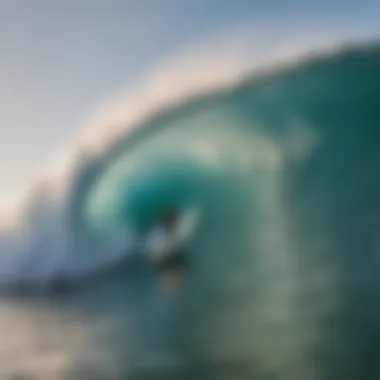
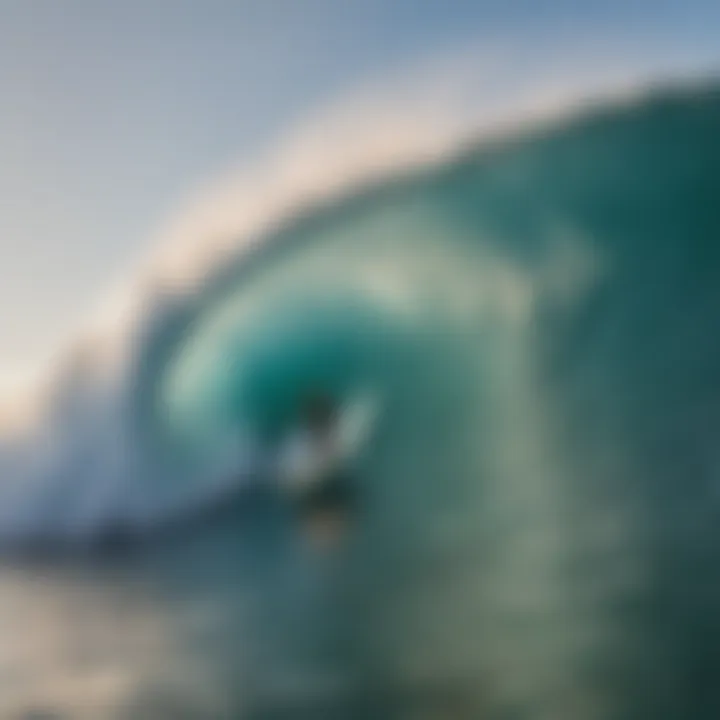
Moreover, local weather patterns, like trade winds, can modify existing swells. When waves travel vast distances, they may lose energy; yet, the right wind can help reform and build those waves, creating desirable conditions for watersport activities.
The intricate dance between ocean currents and wind systems is like a well-rehearsed symphony—each player essential for producing the perfect wave.
By acknowledging how geography and climate come together, watersport enthusiasts can plan with greater precision. Knowing when the trade winds will typically kick in can mean the difference between a thrilling day on the water and an exhausting struggle against the elements. Preparation based on these factors enables participants to make the most of their aquatic adventures, maximizing both safety and enjoyment.
Understanding Swells
Understanding the dynamics of ocean swells is essential for any watersport enthusiast eager to make the most of their time on the water. Swells are not just the noticeable waves that we see gliding towards the shore; they play a vital role in determining the safety and enjoyment of various water activities. This section aims to break down the intricacies of swells, helping you grasp why they behave the way they do and how that knowledge is crucial for surfing, sailing, and other aquatic pursuits.
What are Ocean Swells?
Ocean swells are essentially long waves generated by the wind, which move across the ocean surface. Unlike ripples, which form closer to the shore, swells have a much longer wavelength and can travel for hundreds of miles. They originate from wind energy acting on the water’s surface. In simpler terms, when the wind blows over the ocean, it creates these swells that make their way across vast distances, often becoming the waves we ride. Understanding these waves can significantly impact your planning for outings, whether you’re seeking the perfect wave to surf or favorable conditions for sailing.
Types of Swells in Hawaii
Hawaii’s unique geographical position and marine environment contribute to several types of swells that vary in characteristics. Familiarizing yourself with these can improve your watersport experience.
Groundswells
Groundswells are typically produced by distant storms, and they travel long distances before reaching the shore. One key characteristic that sets groundswell apart is its longer period and smoother pattern, making it favored among surfers. It provides a more powerful wave, allowing for better rides. The benefit of riding a groundswell is not only the thrill but also the consistency it brings, often resulting in excellent surfable waves on various beaches like the iconic Waimea Bay. However, these swells can also become intimidating due to their power, requiring skill and technique to navigate successfully.
Wind Swells
On the other hand, wind swells are generated closer to shore, typically by local wind patterns. The main characteristic of wind swells is that they have shorter periods than groundswell. These swells can be choppier and less predictable. Many watersport enthusiasts, especially those just starting out, might find wind swells easier to tackle as they tend to break more regularly but with less force. However, the unpredictability can also lead to difficult conditions for surfing or sailing, especially during high winds.
Short-Period vs. Long-Period Swells
When considering what type of swell to engage with, it is crucial to understand the difference between short-period and long-period swells. Short-period swells usually generate steep, fast-breaking waves, often deemed suitable for less experienced surfers. In contrast, long-period swells are more gradual and longer between waves, resulting in more powerful and rideable waves. A significant advantage of long-period swells is their ability to build up energy over long distances, leading to smoother rides with greater potential for spectacular performances. Choosing between these two types can ultimately affect not just the enjoyment but also the safety of your endeavors on the water.
In summary, understanding the types of swells in Hawaii equips watersport enthusiasts with the necessary knowledge to make informed decisions about their activities, leading to safer and more enjoyable experiences out on the waves.
Always check the swell forecast before heading out – it can make or break your day on the water.
Factors Influencing Swell Patterns
Understanding swell patterns in Hawaii requires a closer look at several critical elements that work in concert to create the ocean's dynamic environment. For watersport enthusiasts, recognizing these influences can be the difference between riding a perfect wave or battling choppy waters. Throughout our exploration of swell patterns, we’ll emphasize how wind, ocean currents, and the unique geological features of Hawaii interact to mold the conditions experienced by surfers, sailors, and divers alike.
Wind Patterns
Wind serves as the catalyst for generating swells, pushing against the ocean's surface and creating that initial energy needed for waves to form. In Hawaii, local wind patterns can vary significantly based on geographic location and seasonal changes. The trade winds, which blow from the northeast, typically offer more consistent swells, especially during the winter months when storms develop in the north Pacific. Conversely, summer months might see lighter winds, leading to more mellow wave conditions.
What’s more, understanding the nuances of wind speed and direction is equally essential.
- Stronger Winds: Faster winds generally lead to larger swells, provided they blow over a considerable distance, or fetch.
- Direction: Winds coming from specific angles can shift the waves, altering their height and shape, influencing not only surfing conditions but also the safety of sailing routes.
"An understanding of local wind patterns can make a world of difference. Those who get it right see performance skyrocket, while others might find themselves in over their heads."
Ocean Currents
Ocean currents, the underwater rivers of the sea, play a substantial role in swell formation. These currents impact not just wave height but also how waves break on the shore. Off the coast of Hawaii, currents from the north Pacific gyre can transport warm waters into the region, altering local conditions that might otherwise create calmer waters.
- California Current: This cold-water current travels southward, directly influencing the temperature and density of water in Hawaii, which can impact the swells that arrive from the north.
- Equatorial Currents: These currents push warm water toward Hawaii, leading to stronger, more dynamic conditions ideal for surfing.
Understanding how these currents flow and interact with wind patterns can significantly enhance the proficiency of ocean-goers who rely on the rhythm of the waves.
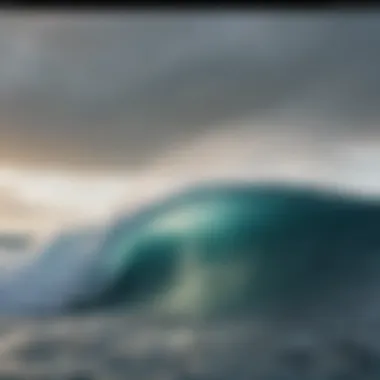
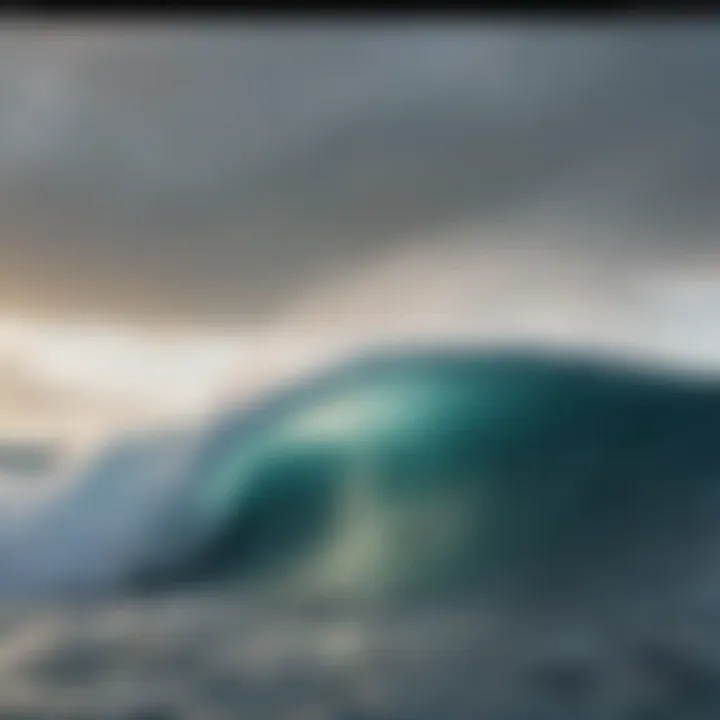
Geological Features
The physical make-up of Hawaii’s coastline also comes into play when discussing swell patterns. The islands are dotted with various reefs, underwater formations, and volcanic structures that shape how waves break as they approach the shore. These geological features determine the suitability of a location for different watersports, such as:
- Surfers' Paradises: Spots like Pipeline on Oahu are famous for their powerful, hollow waves, largely due to the complex reef structure.
- Sailing Areas: Know-nothing sailors can easily get caught off guard by reefs that obstruct direct routes, making it crucial to understand the landscape.
- Dive Sites: Areas with specific geological formations can create vibrant marine ecosystems, deeply influencing divers' choices.
By taking into account the interplay of these factors—wind patterns, ocean currents, and geological features—watersport enthusiasts can develop a sharper insight into when and where to enjoy their favorite activities in Hawaii. This knowledge not only enhances performance but also promotes safety during ocean adventures.
Interpreting the Hawaii Swell Forecast
Understanding how to interpret the swell forecast is essential for anyone venturing into Hawaii's waters, whether you’re a seasoned surfer or a sailor looking for reliable winds. Accurate interpretation helps water sport enthusiasts make informed decisions about when and where to engage in their activities. It can mean the difference between riding a perfect wave and being outmatched by unexpected conditions.
Reading Forecast Charts
Forecast charts can initially appear overwhelming. However, breaking them down into simpler parts makes it much easier to grasp their significance. Typically, these charts display vital data such as swell height, period, and direction.
- Swell Height refers to the vertical distance between the crest (top) and trough (bottom) of a wave. Understanding this measure helps determine whether the conditions are suitable for your level of expertise.
- Wave Period indicates the time it takes for two consecutive waves to pass a given point. This can significantly impact wave power; longer periods usually mean more powerful, well-formed waves that are appealing to surfers.
- Direction displays where the swells are originating from. Chart symbols often represent direction, aiding sailors and surfers in choosing the best spots on the islands.
Reading the charts correctly can prevent unfortunate circumstances. As the old adage goes, "Don’t judge a book by its cover." Always verify数据 before taking the plunge.
Understanding Wave Height and Period
Wave height and period offer a window into the ocean's mood. Higher waves may signify ideal surfing opportunities or acceptable sailing conditions, depending on the skill level of the participant. Here’s what to consider:
- For Surfers: Waves between 2 to 6 feet are generally great for most enthusiasts. However, anything above 8 feet can be daunting, especially for those less experienced.
- For Sailors and Kayakers: Swell period also plays a critical role. A 10-second swell period can suggest more stable conditions. Longer periods typically imply less chaotic water, leading to a smoother sailing experience.
It’s prudent to remember that both height and period work in tandem. A misleading forecast might show a manageable wave height but neglect to mention a short period that turns small waves into a choppy mess. Keep an eye on both aspects!
Wave Direction and Its Importance
Wave direction provides insights that are crucial for safety and effectiveness. This aspect helps determine where to position oneself to maximize enjoyment and minimize risk.
- Offshore Winds: When the swells approach from an offshore direction, surfers can expect clean lines and better shape for riding. This is often considered the golden ticket.
- Onshore Winds: Conversely, swells coming from an onshore direction can create disorganized water, rendering the environment less ideal for both surfing and sailing.
- Habitat Awareness: Certain beaches are better suited for specific swell directions. Knowing these nuances can enhance your experience.
"In the waves of change, we find our true direction."
Understanding wave direction allows watersport enthusiasts to make strategic decisions, ensuring their time spent in the water is not only enjoyable but also safe.
Best Tools for Swell Forecasting
In the world of watersports, having the right information is like having a treasure map. For enthusiasts braving the waves or sailing across vast stretches of ocean, keeping an eye on swell forecasts can make or break a good day out. The advent of technology has opened a floodgate of resources to help water adventurers interpret ocean conditions with ease. Understanding which tools to use and how they can contribute to a better experience is key.
Web-based Resources
Web-based resources play a significant role in swell forecasting. They offer up-to-date information, visualization tools, and detailed analyses, making them indispensable for novice and seasoned water sports enthusiasts alike. Websites like Surfline and Magicseaweed are prime examples of platforms that deliver essential data in a user-friendly manner.
- Detailed Forecasts: These sites provide extensive breakdowns of anticipated wave height, period, and direction for multiple locations across Hawaii. This information allows users to choose their surfing or sailing spots wisely based on conditions.
- Interactive Maps: Many platforms incorporate interactive maps that visualize swell activity. This feature helps users quickly interpret current conditions at various beaches, guiding them to optimal spots.
- Community Input: Some of these resources have forums or live reports from fellow enthusiasts. This community aspect can offer insights that aren’t always captured in numerical data.
Utilizing web-based resources can enhance knowledge about the sea's behavior and inform better decision-making when planning activities.
Mobile Applications
In today’s fast-paced world, having essential information at your fingertips is a game changer. That's where mobile applications come into play, offering the flexibility to track swell forecasts on the go.
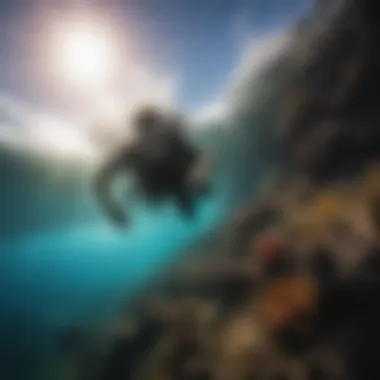
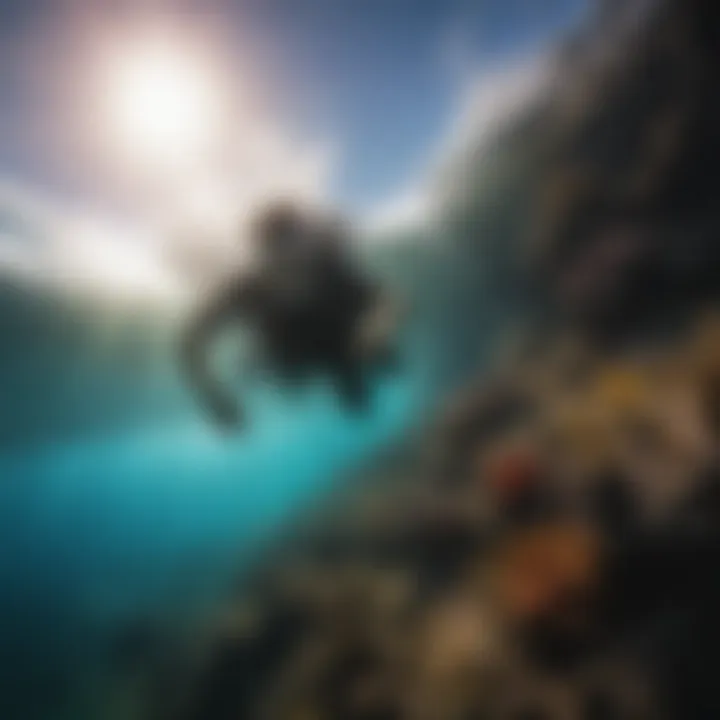
- Real-Time Alerts: Many apps, like Windy and SwellWatch, send push notifications when conditions change, ensuring users stay informed without constantly checking a website.
- User-Friendly Interfaces: Mobile applications typically have simplified designs that make it easy to access critical information quickly. With intuitive layouts, even those who aren’t tech-savvy can grasp swell forecasts, tidal charts, and wind conditions effortlessly.
- Offline Access: Several apps allow users to download maps and data for offline use. This feature is crucial for watersport lovers who venture to remote areas where internet connection may be spotty.
The fusion of mobile technology with swell forecasting arms water enthusiasts by blending convenience with extensive data availability, making it easier than ever to plan their next adventure.
"Knowledge is power. Harnessing the tools to understand swell forecasts can elevate your watersport experience exponentially."
By utilizing a combination of web-based resources and mobile applications, watersport enthusiasts can make well-informed choices, ultimately leading to safer and more enjoyable experiences on the water.
The Impact of Swells on Watersports
Understanding how swells affect various watersports is crucial for anyone looking to have a thrilling experience in the ocean. Swells play a pivotal role in shaping the conditions for activities like surfing, sailing, and even paddleboarding. Ignoring the influence of swells can lead to missed opportunities or, worse, dangerous situations on the water. To navigate these waters safely and successfully, it’s essential to grasp some specific elements.
Surfing Conditions and Techniques
For surfers, the swell's height, direction, and period directly influence the riding experience. When the swell is right, it can create perfect waves, allowing for exhilarating rides and impressive maneuvers. But not every swell is suitable for every surfer.
- Wave Height: A larger swell can be awe-inspiring but also intimidating for less experienced surfers. Beginners often feel more comfortable in smaller swells, typically ranging from 1 to 3 feet, while more advanced surfers seek out bigger swells for advanced tricks and thrills.
- Wave Period: The time between waves is just as significant as height. Longer periods generally provide better, more consistent waves. Surfers need to adjust their paddling techniques accordingly.
- Lineup Position: Knowing where to sit in relation to the breaking waves is essential. Understanding how to read the swell and determine the best spot can enhance performance significantly.
Sailing Strategies During Swell Events
For sailors, swells can either become allies or adversaries. How you approach sailing during swell events can make all the difference in efficiency and safety.
- Sail Trim: Adjusting your sails based on swell patterns is crucial. When encountering larger swells, it might be advantageous to ease the sails to allow the boat to move more freely with the water.
- Course Navigation: Timing your turns is key. While sailing, try to take the swells at an angle rather than head-on or beam on, as this reduces the risk of capsizing or taking on water.
- Watch and Adapt: Stay aware of the changing conditions. A sudden increase in swell height can necessitate quick adjustments to your strategy, from reefing sails to changing course.
Safety Considerations for Watersport Participants
Every ocean enthusiast must prioritize safety, and understanding swells is a part of that. Here are some points to keep in mind to minimize risks:
It’s not just about how well you can ride the waves; it’s also about understanding the ocean’s mood.
- Know Your Limits: If the swell conditions far exceed your skill level, it’s wise to sit this one out.
- Equipment Check: Ensure your equipment is suitable for the conditions. For example, larger surfboards handle swells differently than smaller ones.
- Buddy System: Always try to have a partner with you. If conditions get rough and help is needed, having someone nearby can be a lifesaver.
- Weather Awareness: Changes in the weather can greatly affect swell conditions. Monitoring the forecast and being prepared for sudden shifts can help keep experiences safe and enjoyable.
Common Misconceptions about Swell Forecasts
Understanding the swell forecasts in Hawaii often comes with a fair share of misunderstandings. Many of these misconceptions can affect how watersport enthusiasts prepare for their activities, contributing to both safety risks and missed opportunities for optimal conditions. Clearing up these myths is vital, as it can empower surfers, sailors, and divers alike with accurate expectations and better decision-making skills when they hit the water.
One significant misconception is that swell forecasts are purely about wave height. While it is true that wave height is a critical factor, it’s merely one piece of the puzzle. Surf conditions are influenced by the interaction of multiple elements such as wave period, wind direction, and even tide levels. These factors play a crucial role in determining how the swell will behave as it approaches the shore.
Additionally, many believe that a bigger swell means better conditions for all types of watersports. However, larger swells can also mean choppier waters or increased hazards, particularly for less experienced participants. Recognizing that size alone does not equate to good conditions is vital for ensuring safety on the water.
Lastly, another prevalent myth is that swell forecasts are always accurate. Weather and ocean dynamics can change rapidly; therefore, surfers and sailors must remain flexible and observe conditions in real time rather than relying solely on forecasts.
“Forecasts provide a guideline but being prepared to adapt is where the real skill lies.”
Myths vs. Reality
- Myth: Higher Swell Always Means Better Waves
Reality: Bigger swells can lead to dangerous and unpredictable conditions. It’s essential to analyze not just the size but the overall wave dynamics. - Myth: Swell Height is All that Matters
Reality: Factors such as wave period and direction can dramatically influence how a swell translates into rideable waves, affecting both performance and safety. - Myth: Forecasts are Exact Predictions
Reality: Ocean conditions are subject to change; forecasts may provide an estimate, but one must remain observant of real-time factors to ensure a safe experience. - Myth: Ideal Conditions are Always Predictable
Reality: While some conditions can be anticipated, many are dependent on variable factors like recent storms or tides, which means there’s always some element of surprise.
Closure
In summing up the insights of this guide, it's fair to say that comprehending the intricacies of Hawaii's swell forecast is not just a nice-to-have; it's an essential toolkit for any watersport enthusiast. The profound impact of swell conditions on activities—be it surfing, sailing, or diving—cannot be overstated. For those who frequent the waters around Hawaii, knowing how to interpret swell patterns properly allows one to pick the ideal moment for their favorite activity.
One significant element addressed is the multifaceted factors at play in swell generation, including local wind patterns and ocean currents. With Hawaii's unique geological features, such as its volcanic formations and coral reefs, the swell behavior can vary dramatically from one spot to another. Understanding these nuances not only helps in enhancing one’s performance but also plays a crucial role in ensuring safety on the water.
Moreover, it’s essential to dispel some of the myths surrounding swell forecasts. For instance, many enthusiasts mistakenly believe that a high wave height always guarantees great surfing conditions. However, wave period and wind influence can drastically change how waves break on the shore. Being informed about these elements leads to safer and more enjoyable experiences.
Ultimately, the ability to read and respond to swell forecasts enables individuals to better align their adventures with optimal conditions. So, whether you're riding the waves at Waimea Bay or cruising the calmer waters of Hanauma Bay, having a firm grasp on swell dynamics equips you for whatever the ocean may throw your way.
"Note that Io Von Hawai'i, a local surfer, once said, 'You’re only as good as your understanding of the ocean.' This embodies the spirit of respect and awareness that is crucial for every adventurer on these beautiful waters."
In a nutshell, this comprehensive guide serves as a roadmap for anyone eager to harness the beauty and challenge of Hawaii's swell dynamics. Being educated about swell forecasts not only elevates the enjoyment but also fosters a more profound respect for the ocean in all its unpredictability.















